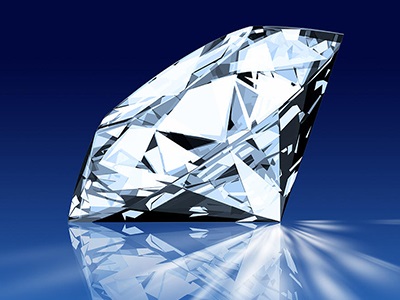The hardest gemstones on earth, diamonds have been treasured as gemstones since their use as religious icons in ancient India. The popularity of diamonds has risen since the 19th century because of increased supply, improved cutting and polishing techniques, growth in the world economy, and innovative and successful advertising campaigns. The dispersion of white light into spectral colors is the primary gemological characteristic of gem diamonds.
Diamonds also come in a variety of natural colors; fancy yellow, chocolate brown, colorless white, blue, green, black, bubble gum pink, orange, purple, and red. "Black", or Carbonado, diamonds are not truly black, but rather contain numerous dark inclusions that give the gems their dark appearance. Colored diamonds contain impurities or structural defects that cause the coloration, while pure or nearly pure diamonds are transparent and colorless.
Historically, diamonds were found only in deposits in Guntur and Krishna district of the Krishna River delta in Southern India. Today, diamonds can be found in Arkansas, Colorado, Wyoming, and Montana. They are also mined in Russia, Australia, Canada, Zimbabwe, Angola, and the Congo.
